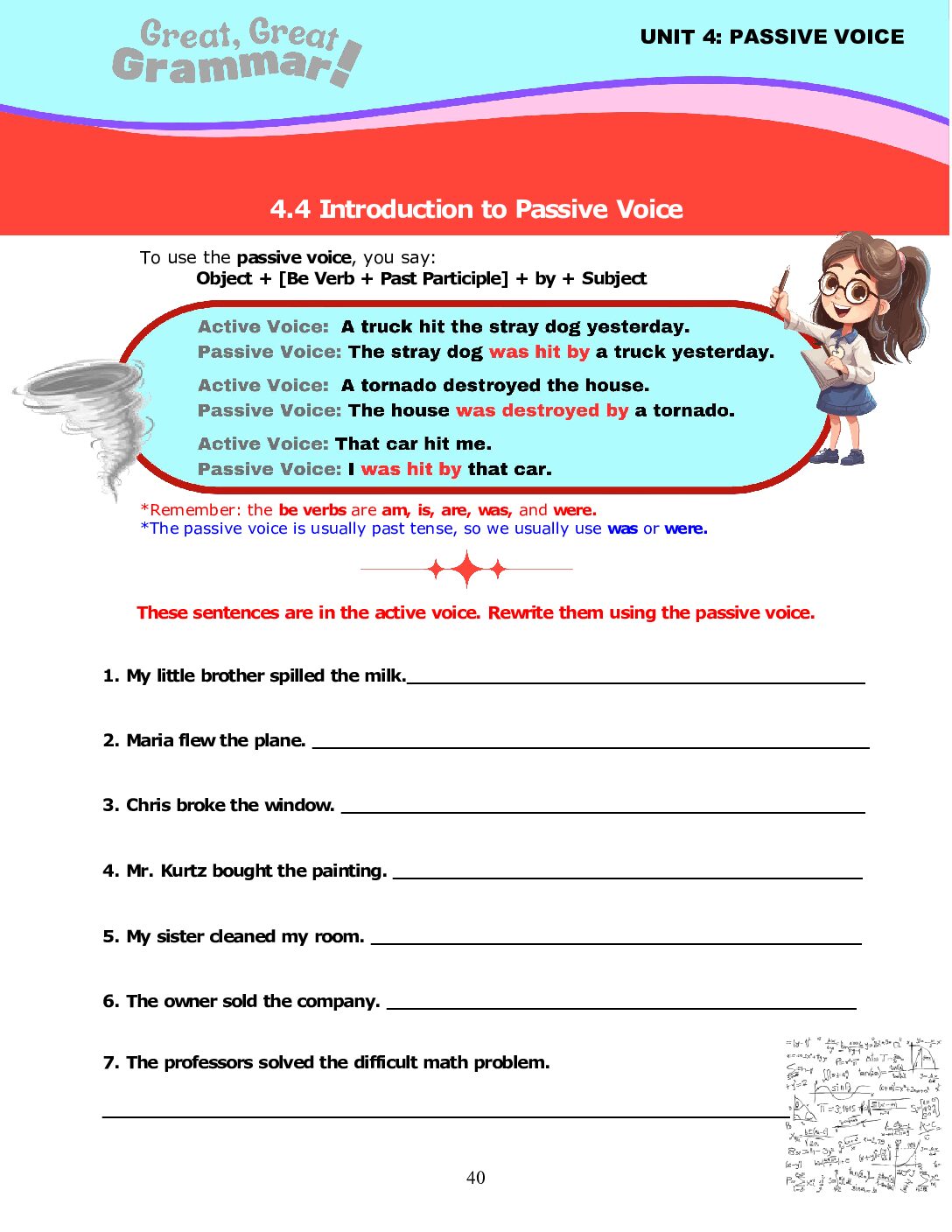In this ESL grammar lesson, students practice rewriting several sentences in the passive voice.
ESL Grammar: What is Passive Voice?
In passive voice sentences, the object of an action becomes the subject of the sentence. The focus shifts from who is performing the action to the action itself or its recipient. This can be particularly useful when the doer is unknown, unimportant, or you simply want to emphasize the action.
Structure of Passive Voice
The passive voice is formed using the verb “to be” in the appropriate tense, followed by the past participle of the main verb. Here’s the basic formula:
Subject + to be (in the correct tense) + past participle + (optional: by + agent)
Examples of Passive Voice
- Present Simple:
- Active: The chef cooks the meal.
- Passive: The meal is cooked by the chef.
- Past Simple:
- Active: The teacher read the book.
- Passive: The book was read by the teacher.
- Future Simple:
- Active: They will build a new school.
- Passive: A new school will be built by them.
- Present Continuous:
- Active: The company is launching a new product.
- Passive: A new product is being launched by the company.
- Present Perfect:
- Active: They have completed the project.
- Passive: The project has been completed by them.
The English grammar lesson below introduces the passive voice, in clear and simple language that is easy for ESL learners to understand. Our series of ESL grammar lessons on subjects and verbs introduce these concepts and reinforce them through helpful and instructive exercises.
This lesson is available for free download, and you can download many more English grammar lessons focusing on advanced aspects of English grammar (past continuous tense, present perfect tense, present perfect continuous tense, passive voice, embedded questions, relative clauses) in our comprehensive, intermediate- to advanced-level ESL grammar textbook Great, Great Grammar! (Book 3: Tenses and More!).

